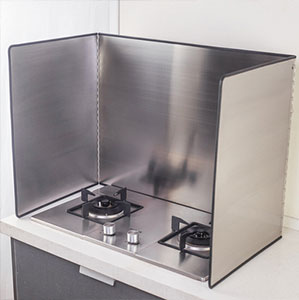Stainless steel is a widely used material known for its durability, corrosion resistance and elegant appearance. Whether it is used in kitchen appliances, outdoor installations or decoration in architectural design, stainless steel demonstrates its versatile properties. However, in environments with strong sunlight, people often have questions about whether stainless steel will become hot in sunlight.

In-depth understanding of stainless steel
First of all, the main components of stainless steel are iron and chromium, of which chromium is added to make it resistant to corrosion. According to different formulations and grades, stainless steel may also contain nickel, molybdenum, titanium and other elements, which together affect the physical properties of stainless steel and application fields.
Thermal conductivity
Stainless steel has a lower thermal conductivity than other metals such as aluminum or copper. This means that when exposed to sunlight, the temperature of the stainless steel material rises relatively slowly and does not absorb and retain heat as quickly as hot topic metals.
Surface treatment and heat reflection
The surface treatment of stainless steel has a significant impact on its thermal response to sunlight. Polished stainless steel reflects sunlight more effectively, reducing heat absorption. In contrast, rough or matte surfaces absorb heat more easily, making the material potentially hotter.
Heat loss
Another key factor is the rate at which stainless steel loses heat. Due to its low thermal conductivity, stainless steel can release heat relatively quickly when sun exposure is reduced or blocked. This makes stainless steel excellent in applications that require temperature control, such as outdoor furniture and building facades.

Practical application considerations
In practical use, although stainless steel does warm in the sun, it usually does not reach high temperatures that can cause burns or discomfort. The actual temperature depends on a variety of factors, including the intensity and duration of sunlight, the specific grade of stainless steel, and how the surface is treated.
Conclusion
All in all, stainless steel gets hot in the sun, but much less so than other hot topic conductivity metals. Its excellent resistance to high temperatures and rapid heat loss make stainless steel ideal for a variety of indoor and outdoor applications.
Therefore, when considering the use of stainless steel for outdoor furniture, kitchen equipment or architectural decoration, it is crucial to understand its physical properties and thermal response. This not only helps to choose the right material, but also ensures its stability in different environments and long-term reliability.



